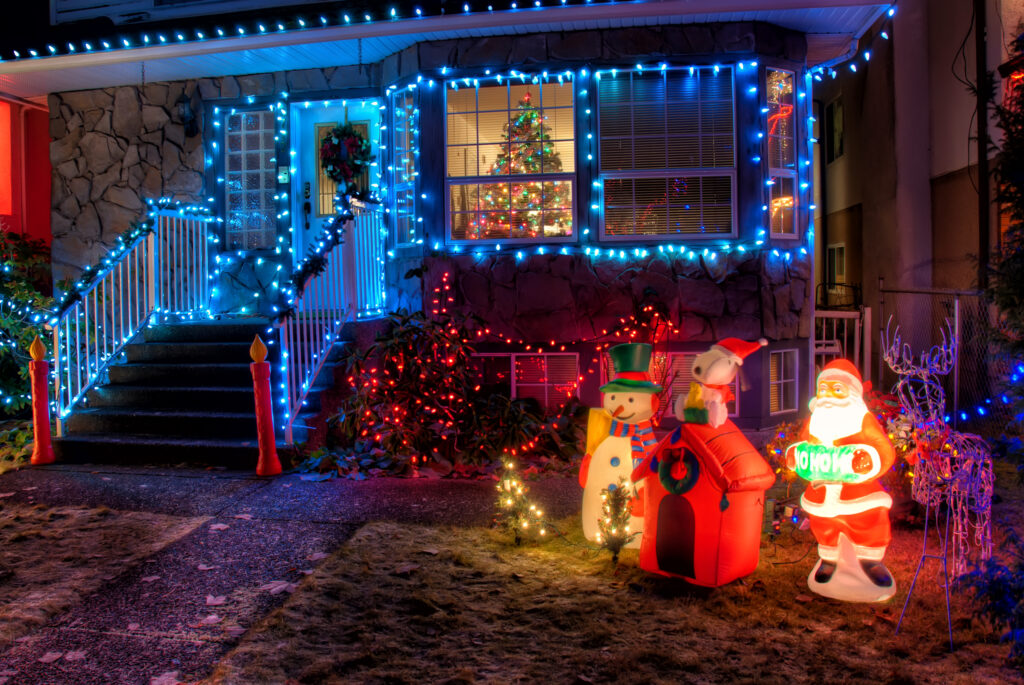It’s December in Brisbane, and that means two things: the heat is on, and the Christmas lights are going up! Nothing quite says “Aussie summer holiday” like a beautifully lit-up home, but in our climate of intense sun and sudden storms, those dazzling displays can carry hidden electrical risks.
We all want that picture-perfect glow, but as your local, trusted electricians at Sparc Electrical, our top priority is making sure your festive cheer doesn’t turn into a safety hazard. Forget about the naughty or nice list, let’s talk about the Australian Standards list and how to keep your home safe, compliant, and brilliantly lit this festive season.
1. Beware the Overseas Bargains (They’re Not Compliant!)
The biggest safety risk we see comes from non-compliant lights bought online from overseas sellers. These products might be cheap, but they are often not designed for the Australian 240-volt system and simply don’t meet our strict safety standards.
Pro Tip: Always look for the Regulatory Compliance Mark (RCM) on the packaging or the light’s plug. This symbol confirms the product has been tested and meets Australian safety standards for fire and electric shock. If you’re unsure, choose extra-low voltage LED or solar-powered lights. They are the safest options, and they’ll save you a fortune on your power bill!
2. Indoor vs. Outdoor: It’s Not Just a Suggestion
Queensland’s summer can deliver everything from a gentle drizzle to a torrential downpour and cyclonic wind. Your lights need to be built to handle them.
- Indoor Use Only: These lights are not weatherproof. Using them outdoors, even under a veranda, is a massive risk for short circuits and electric shock.
- Outdoor Use Only: These lights will have an IP rating (e.g., IPX4 or IP44) on the packaging, indicating their level of protection against water and dust. Outdoor equipment should have a minimum rating of IP23.
Pro Tip: For outdoor connections, make sure all your joins and transformers are housed in a properly weatherproof connection box. This keeps water out of the circuit and is a critical step in preventing trips and shocks, especially with young kids running around the yard.
3. Don’t Be a DIY Daredevil: Cords and Connections
Before you even plug in, take five minutes to un-tangle and inspect last year’s lights. Look closely at the leads, plugs, and lamp holders for any:
- Frayed, cut, or squashed cords.
- Damaged plugs or plugs missing insulated pins (essential for plugs sold after 2006!).
- Missing or cracked bulbs that expose internal wiring.
If you find damage, dispose of the entire set safely. Never use a damaged lead.
Pro Tip: Never, ever overload a power point with multiple double adaptors or ‘piggy-backed’ plugs. If you need more outlets, use a quality, surge-protected power board. We also recommend setting your lights up on a dedicated timer. Not only is this great for energy efficiency, but it also ensures the lights are always switched off before you leave the house or go to sleep, a crucial fire safety measure.
4. The Safety Switch Lifeline
The single most important safety device in your home is your Safety Switch (RCD). Before you plug in a single string of lights, give your Safety Switch a quick test; it only takes a few seconds!
The RCD is designed to cut the power in milliseconds if it detects a leak (like a fault caused by water in your Christmas lights). A quick check now could save a life later. If your home doesn’t have adequate safety switch coverage, or you’re running lights off an older circuit, give Sparc Electrical a call.
From all of us at Sparc Electrical & Airconditioning, have a safe and sparkling Christmas! Book your electrical check-up now to ensure your home is ready for the holidays and the long, hot Queensland summer.


 Your Local Reliable Electrician That You Can Trust
Your Local Reliable Electrician That You Can Trust 